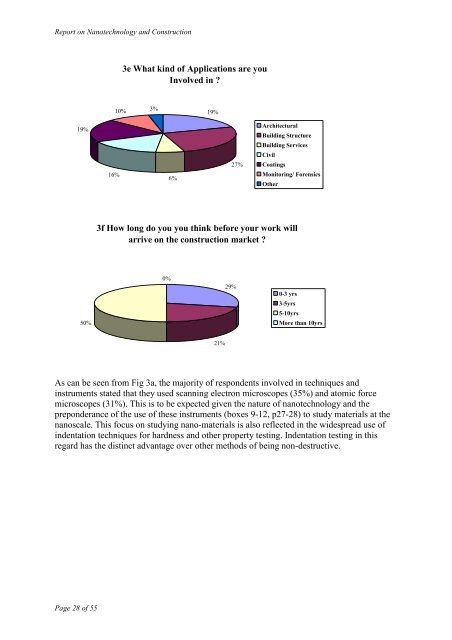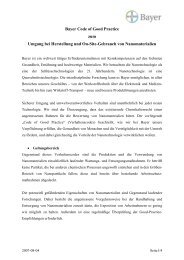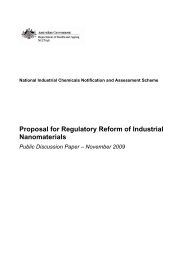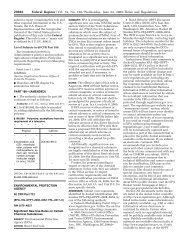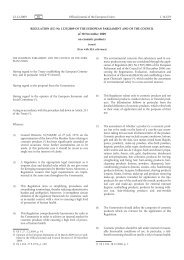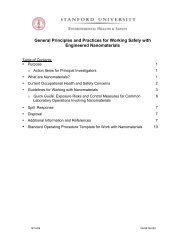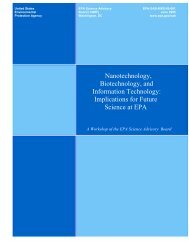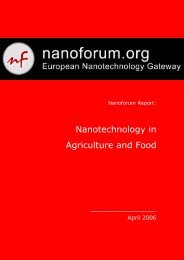Nanotechnology and Construction
Nanotechnology and Construction
Nanotechnology and Construction
Create successful ePaper yourself
Turn your PDF publications into a flip-book with our unique Google optimized e-Paper software.
Report on <strong>Nanotechnology</strong> <strong>and</strong> <strong>Construction</strong><br />
3e What kind of Applications are you<br />
Involved in ?<br />
10% 3%<br />
19%<br />
19%<br />
16%<br />
6%<br />
27%<br />
Architectural<br />
Building Structure<br />
Building Services<br />
Civil<br />
Coatings<br />
Monitoring/ Forensics<br />
Other<br />
3f How long do you you think before your work will<br />
arrive on the construction market ?<br />
50%<br />
0%<br />
29%<br />
0-3 yrs<br />
3-5yrs<br />
5-10yrs<br />
More than 10yrs<br />
21%<br />
As can be seen from Fig 3a, the majority of respondents involved in techniques <strong>and</strong><br />
instruments stated that they used scanning electron microscopes (35%) <strong>and</strong> atomic force<br />
microscopes (31%). This is to be expected given the nature of nanotechnology <strong>and</strong> the<br />
preponderance of the use of these instruments (boxes 9-12, p27-28) to study materials at the<br />
nanoscale. This focus on studying nano-materials is also reflected in the widespread use of<br />
indentation techniques for hardness <strong>and</strong> other property testing. Indentation testing in this<br />
regard has the distinct advantage over other methods of being non-destructive.<br />
Page 28 of 55


